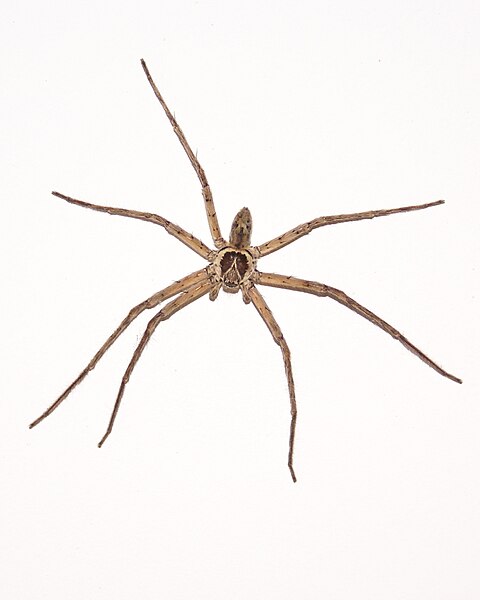As a boy, my favorite exotic animal collecting site was, of all places, the loading dock of the local A&P Supermarket. Raymond Ditmars and other famous city-born naturalists had taken this route, and so I followed. The store was not far from the Bronx’s Hunts Point Market, where trucks from all over delivered fresh produce. Hidden within the produce crates were the creatures I sought – tree frogs, spiders, lizards, insects and such (I once narrowly missed a Mouse Opossum). All large spiders were called “Banana Spiders”…one, the Giant Crab or Huntsman Spider (Heteropoda venatoria), appeared on occasion but was always too fast for me. I became obsessed with this beast, whose leg span approached 6 inches, but, try as I might, I remained crab spider-less.
Meeting Both a Long-Lost Spider and Entomologist

The spiders were faster than I remembered (and I was slower!)…those I captured had mainly fallen into places from which they could not escape. They proved surprisingly easy to breed and, once set up in our exhibit area, were very popular with our visitors.
I took a specimen to the American Museum of Natural History, where it was identified as Heteropoda venatoria. Amazingly, the woman who identified the spider for me was famed invertebrate specialist Alice Gray…while speaking, we discovered that it was she who had answered my mantis rearing questions when I called the museum as a boy, 25 years earlier!
Captive Care
These impressive spiders occasionally appear on the price lists of Florida-based reptile dealers, and they are quite inexpensive. If a few guidelines are followed, they make fascinating, active terrarium inhabitants, and breed readily. Once their amazing speed in hunting is seen in action, even die-hard tarantula fans cannot resist them!
I’ll cover the natural history and captive care of Huntsman Spiders in Part II of this article.
Further Reading
An interesting article on this spider’s life cycle is posted at on the website of the Cambridge Entomological Society.
Male Huntsman Spider image referenced from wikipedia and originally posted by B. Navez
 That Reptile Blog – Reptile, Amphibian and Exotic Pet Care and Information
That Reptile Blog – Reptile, Amphibian and Exotic Pet Care and Information

 My own view has always been that it makes sense for people living in the tropics to avoid all snakes and spiders, and I’ve observed that this lesson is taught to children early in life in many places.
My own view has always been that it makes sense for people living in the tropics to avoid all snakes and spiders, and I’ve observed that this lesson is taught to children early in life in many places. swimming (European diving bell spider), spitting silk (spitting spider), hiding in flowers (crab spider), throwing webs (bolas spider), luring fishes while floating (fishing spiders) or rushing from burrows fitted with hinged doors (trap door spider).
swimming (European diving bell spider), spitting silk (spitting spider), hiding in flowers (crab spider), throwing webs (bolas spider), luring fishes while floating (fishing spiders) or rushing from burrows fitted with hinged doors (trap door spider).